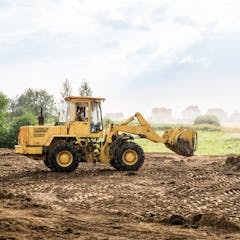
Articles sur Renewable energy
Affichage de 1 à 20 de 1283 articles

Understanding Berlin’s nuclear exit, one year on.

Made in Australia could be set for a comeback, if federal government promises materialise. But these localisation plans must work for the regional communities hosting new projects.

The Federal Energy Regulatory Commission recently ruled that it won’t approve energy projects on Native lands without tribal consent. But many more applications are pending.

A fossil fuel ideology transcends political lines and inhibits effective action on the green transition. Alberta is a clear example.

The energy transition could be scuppered by community scepticism. Communities have to see the benefits.

Even with the best intentions, policies from different government departments can clash.

New research has found that clean tech has much better prospects in the U.S., while oil and gas firms in Canada may outlast their American counterparts.

The skies and the gods were inseparable in Maya culture. Astronomers kept careful track of events like eclipses in order to perform the renewal ceremonies to continue the world’s cycles of rebirth.

New charts and data show how corporate demand could boost clean energy investment in regions where renewable energy potential is strong but wind and solar power have lagged.

It’s common to see solar panels on rooftops and fields, but they aren’t widespread on cars − yet.

South Africa’s national electricity plan is being finalised. A scientist argues that an energy mix of nuclear, clean coal, renewable energy and gas is urgently needed to end 15 years of power cuts.

What would it mean to bring solar manufacturing back on shore in Australia?

As South Africa heads towards elections, there is no quick fix solution to the electricity crisis in the country. What exactly are the political parties promising voters?

Meet the next generation of wind turbines that can operate in deeper waters.

In states with competition between retailers, the energy regulator is promising savings for most customers on the default plan. But it’s small change compared to price hikes. Here’s what to expect.

If Africa built only all the renewable power plants it has already planned, this would be enough to generate 76% of all electricity needed on the continent by 2040.

Solar development isn’t always good for the land, but pairing it with agriculture can produce multiple benefits.

When the Moon blocks the Sun during an eclipse, utility suppliers have to pull power from the grid to make up for gaps in solar energy.

Big changes are needed to create a consumer-centric National Electricity Market that’s able to manage the rise of rooftop solar.

Small modular reactors are popular among conservative politicians and supposedly the Australian public. But they’re nowhere near ready to power Australia in time to replace coal-powered stations.
